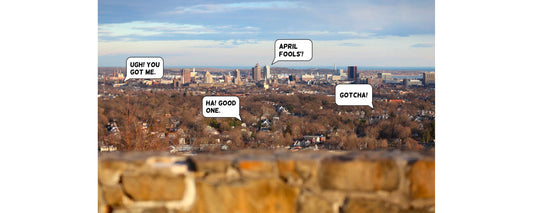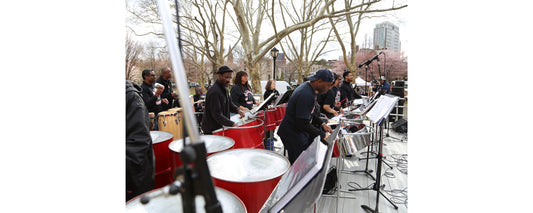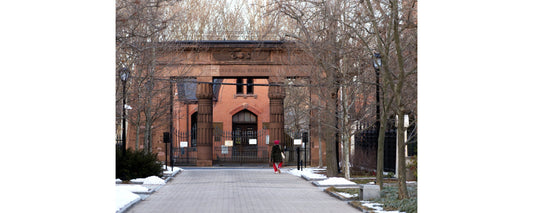Here was a man always frail, desperately poor, who through years of discouragement, elusive success and repeated failures, made, single-handed, one of the major industrial discoveries, and gave us a material which enters daily into the life of everyone.
—Richard Shelton Kirby, “Inventors and Engineers of Old New Haven” (1938)
* * *
Of all the contributions New Haveners have made to the world, Charles Goodyear’s may be the biggest not to garner any personal reward. Despite Job-like setbacks that would have discouraged most, Goodyear spent his whole adult life trying to make rubber more useful, an odyssey of poverty for both himself and his family fueled in good part by a dream of riches. According to Rev. Bradford K. Peirce in Trials of an Inventor (1866), Goodyear repeatedly reinvested the typically paltry revenues from his work “to the one great mission of his life, the development and application of this peculiar natural product.”
Rubber is, indeed, “peculiar”—a fluid, collected by tapping rubber trees, which then coagulates into an elastic form. According to a 1938 New Haven tercentenary pamphlet, “We speak of ‘India rubber’ because much of the early material came to Europe from the West Indies and was found useful for rubbing out pencil marks.” And for a while, that’s about all it was good for. Rubber was notoriously gloppy in hot weather and cracked in the cold. No one in the industrializing world seemed to know quite what to do with it.
sponsored by
But a group of people in South America apparently did. In his 1938 lecture series, “Inventors and Engineers of Old New Haven,” Richard Shelton Kirby noted exports of India rubber shoes from that continent to Boston starting in 1821. The shoes were produced by dipping the rubber latex into clay “covered with a white powder,” then drying it over a “smoky fire,” adding a new layer after each coat hardened. “When ready for market the shoes were stuffed with grass to keep their shape and then shipped. They were thick, heavy and ill-fitting, but the business increased rapidly and enterprising men thought they saw a good business in importing crude ‘gum elastic’ and making shoes here by more efficient methods.”
They were wrong. According to Kirby, “Within a few years all the new companies were bankrupt and closed.” Still, Charles Goodyear anticipated a fortune in devising a systematic method of chemically altering rubber so it could be used to make just about anything.
Born in New Haven in 1800, Goodyear spent much of his life in the Elm City, including at 2 St. John Place (now Church Street) across from the New Haven Green. His first career in hardware—biographer P. W. Barker claims he opened “the first retail hardware store in the United States” in Philadelphia—ended in failure. Back in New Haven, he set up a workshop on upper Congress Avenue, which was described by Oliver P. Hubbard of Yale as “flat roofed and internally blackened with few if any fixtures or movables, besides a course
At one point, Goodyear landed on what he thought was a successful “acid gas process.” But a government contract to make 150 rubber mail bags went wrong when he added chemicals to color them. After a few weeks away from his factory, he returned to find the bags “decomposing and dropping from their handles,” Peirce writes. Following the fate of his colleagues, Goodyear’s business collapsed.
As we know, he wasn’t done with rubber. He moved to Woburn, Massachusetts, and turned to manufacturing rubber shoes out of his home. It was in Woburn that Goodyear had his biggest breakthrough. In January of 1839, he was working sulphur and rubber together in the kitchen when, Peirce writes, “a piece of
Despite the discovery that would ultimately support a booming industry of manufacturing rubber products—perhaps most notably the tires on our cars—in New Haven and around the world, Goodyear lived most of his life in poverty, relying on loans from family and friends. He was in and out of debtors’ prison and suffered the trials of an estimated 150 patent lawsuits, which sapped his income despite favorable judgments. At one point, Peirce reports, Goodyear “sold at auction the school-books of his children, which brought him the trifling sum of five dollars.”
Goodyear did manage a few moments in the sun. Among them was the 1851 World’s Fair in London, where his exhibit Goodyear’s Vulcanite Court “consisted of a suite of covered rooms in which every article was made of rubber—walls, roof, cornices, carpets and even furniture,” Barker reports. “Over this panorama of rubber floated rubber balloons (some as much as six feet in diameter), painted and printed in multi-color, several shaped and printed as worlds or globes inflated with hydrogen.”
Nevertheless, the obsessed inventor continued to suffer financial and health setbacks for the rest of his life. He died of what Barker speculates may have been lead poisoning—a result of the chemical process he had developed—in New York City in 1860 and was buried in New Haven’s Grove Street Cemetery.
The Goodyear Tire & Rubber Company that we know today was never affiliated with Charles Goodyear or his family. Rather, its founder named the company in Goodyear’s honor when he opened it in Akron, Ohio, in 1898—a tribute that came too late to be enjoyed by one of New Haven’s most determined men.
Written and photographed by Kathy Leonard Czepiel. Image features a portrait of Charles Goodyear in Bradford K. Peirce’s Trials of an Inventor. This updated story was originally published on December 5, 2018.








